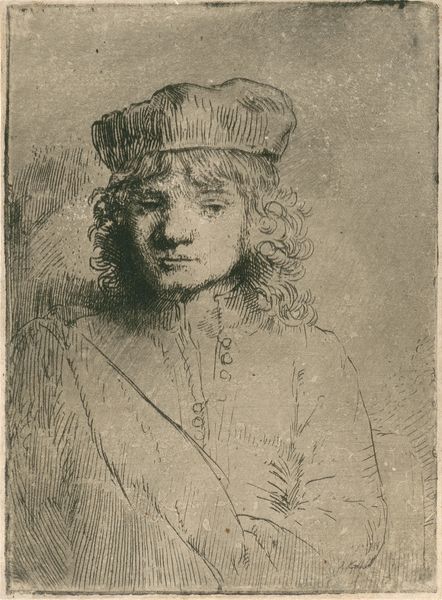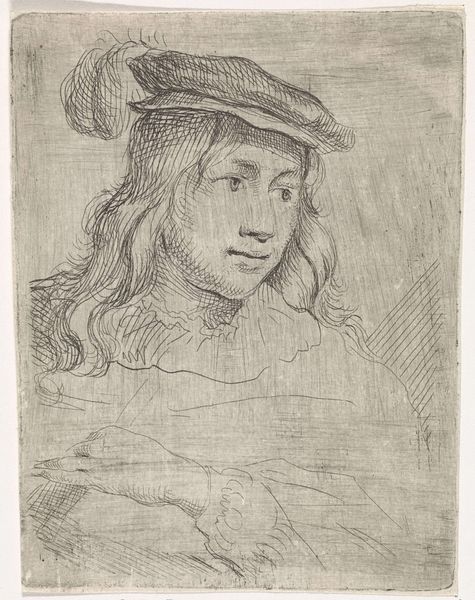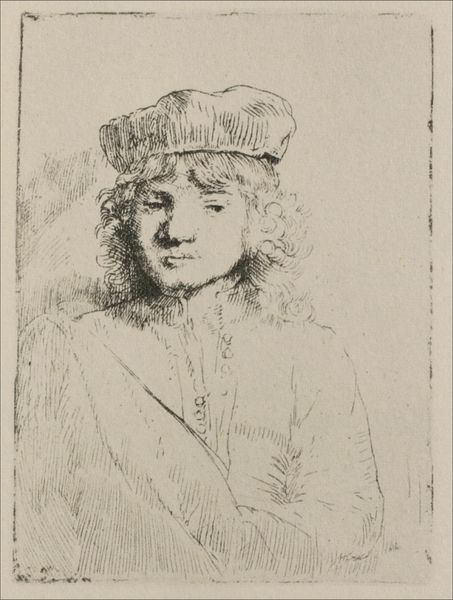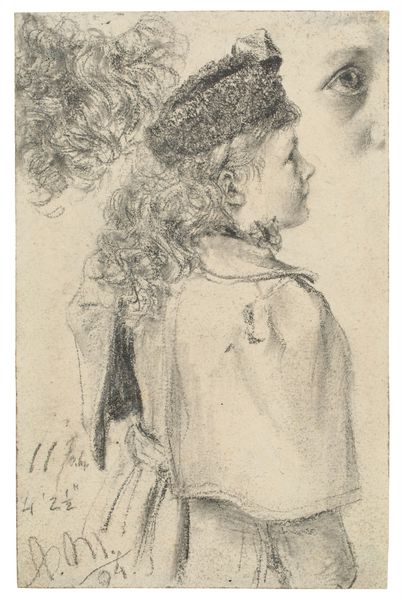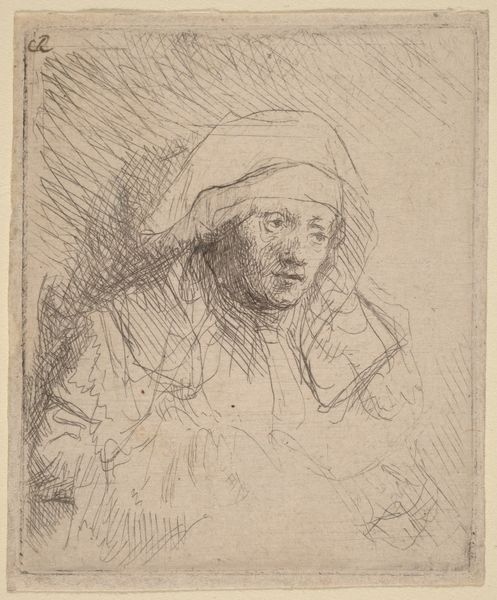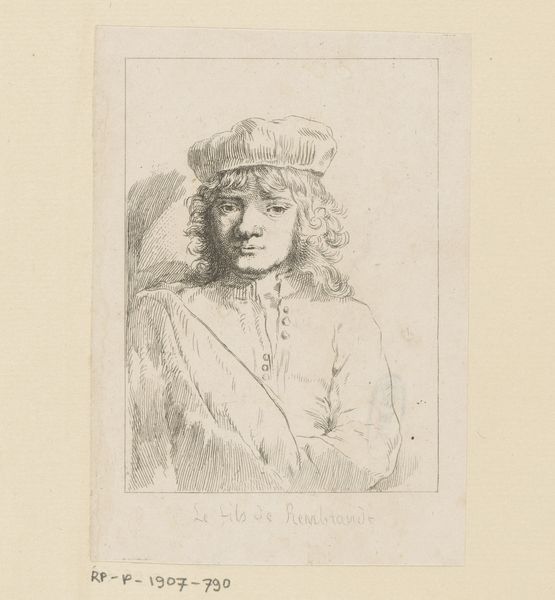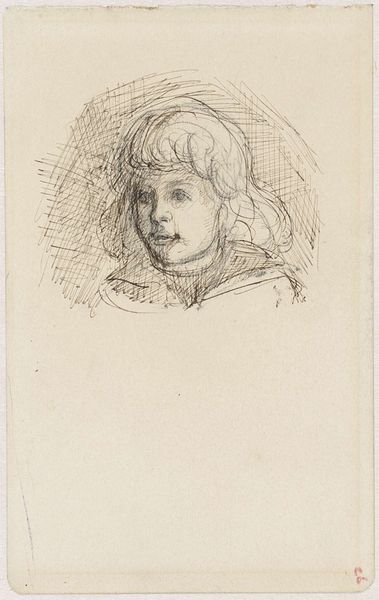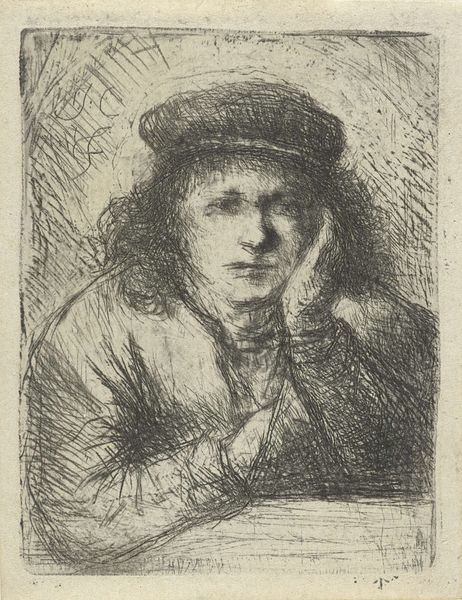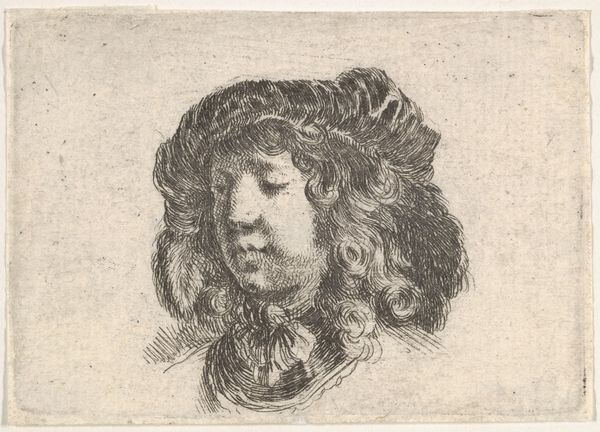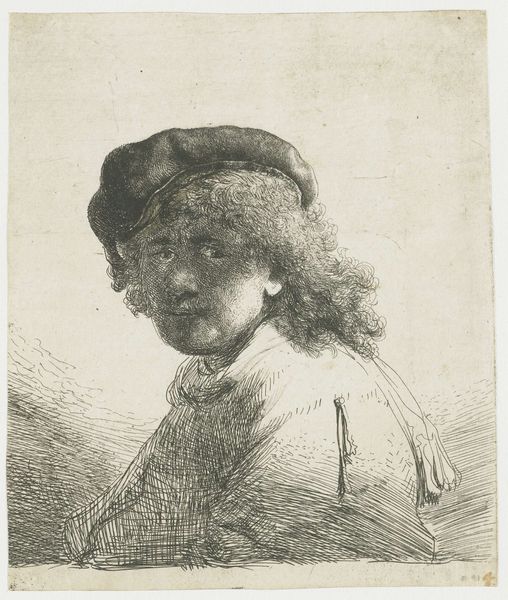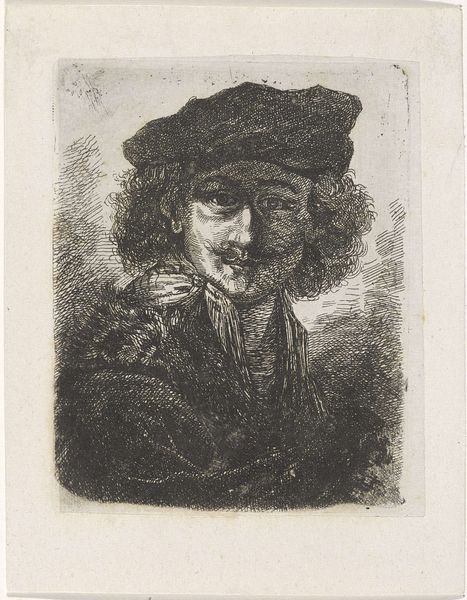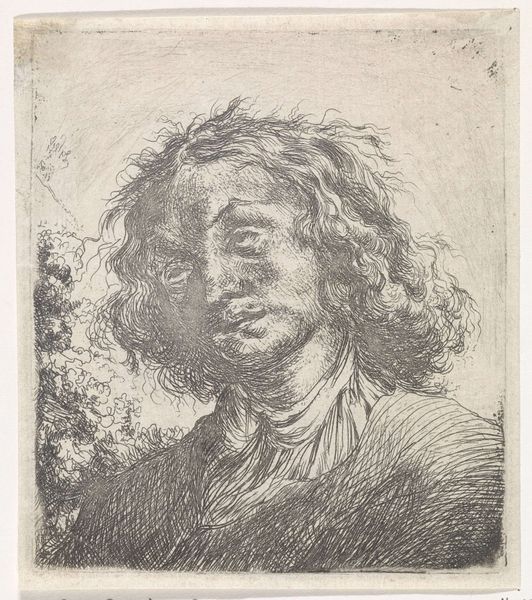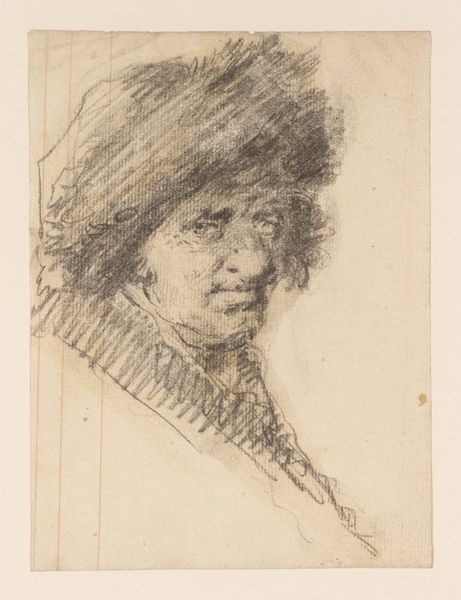
print, etching, engraving
#
portrait
#
pencil drawn
#
dutch-golden-age
# print
#
etching
#
figuration
#
line
#
history-painting
#
engraving
Dimensions: height 115 mm, width 84 mm
Copyright: Rijks Museum: Open Domain
Editor: Here we have an etching from 1819, "The Artist's Son, Titus" by Ignace-Joseph de Claussin, now housed in the Rijksmuseum. I'm really struck by how intimate this feels, despite the lines being so precise. The subject's gaze is really direct. What stands out to you the most when you look at it? Curator: Well, aren’t etchings magical portals? For me, it’s the *dance* of light and shadow that pulls me in – Claussin's masterful manipulation of line to create depth. You sense a deep, personal connection, almost as if the artist were trying to capture not just Titus’ likeness, but also his very *essence*, right? Editor: Absolutely, his expression does feel very lifelike. Do you think this captures an important moment? Curator: Perhaps! You have to consider that this was done posthumously. Rembrandt, the original artist, created several paintings and drawings of his son Titus. I like to think that Claussin has translated those intense moments to something so beautiful through engraving. He’s like a medium channeling a spirit! Now, look closer… notice the angle, the curls…Does this echo other works from the Dutch Golden Age? Editor: I see what you mean, there's a very intimate feel to the piece reminiscent of many golden age paintings. Almost as if Titus is staring straight through you... Curator: It's the gaze. Those artists just KNEW something, didn’t they? Editor: Definitely! Thank you, it's fascinating to learn about it this way. Curator: The pleasure was all mine! Now you get it—art's about feeling first.
Comments
No comments
Be the first to comment and join the conversation on the ultimate creative platform.
